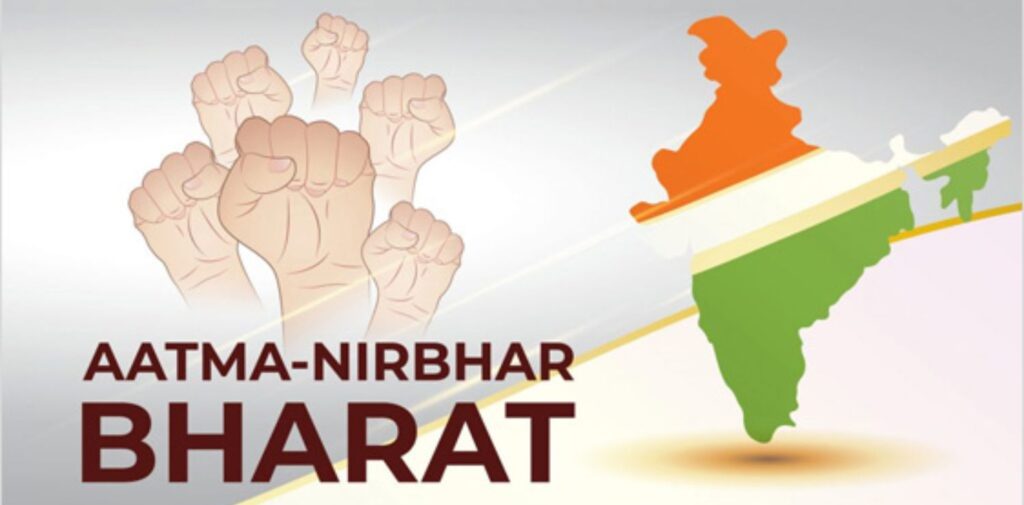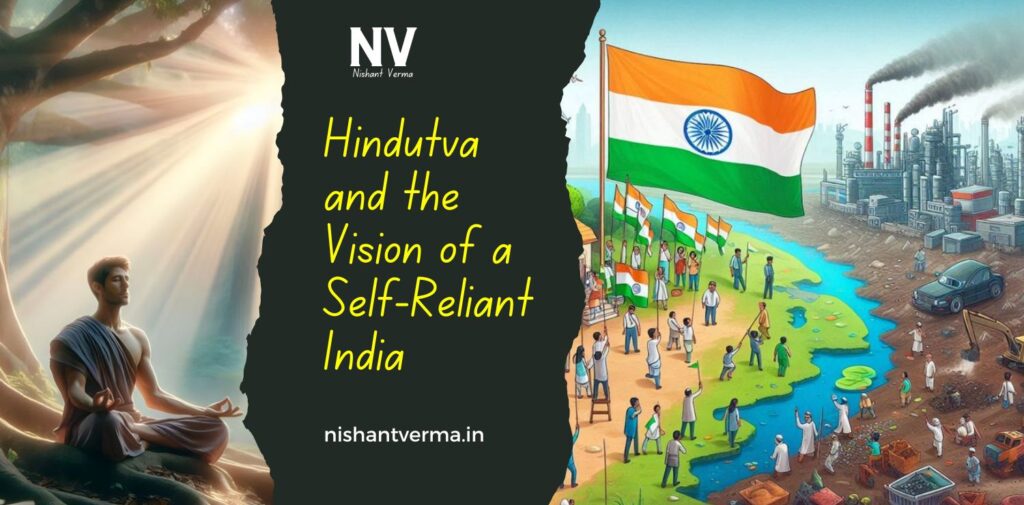In recent years, the idea of “Self-Reliant India” has gained a lot of attention. It is a vision that focuses on making India independent in various aspects such as economy, technology, defense, and culture. This concept is often linked with the philosophy of Hindutva, which is a form of Hindu nationalism. The vision of a self-reliant India can be better understood through the lens of Hindutva, which emphasizes the importance of Hindu culture, values, and self-sufficiency in shaping the future of India. This article explores the connection between Hindutva and the idea of a self-reliant India, its implications, and its relevance in today’s world.
What is Hindutva?
Hindutva, or “Hinduness,” is a political and cultural ideology that was first articulated by Vinayak Damodar Savarkar in the early 20th century. The core idea of Hindutva is that India is a land of Hindus, and Hindu culture and civilization should be at the center of Indian identity. Hindutva is not just about religion, but about a cultural and political unity based on shared history, values, and traditions that go beyond mere religious boundaries.
Savarkar argued that for India to thrive, it must embrace its ancient heritage, which includes values such as self-discipline, respect for nature, and a strong sense of community. He believed that India’s cultural strength lay in its ability to maintain its roots while adapting to modernity.

The Idea of a Self-Reliant India
The concept of a self-reliant India, or “Atmanirbhar Bharat,” has been popularized in recent years, particularly by the current government. The main goal of this vision is to reduce India’s dependence on foreign goods, services, and technologies and to develop its own capabilities in various sectors. This idea is seen as crucial for national security, economic growth, and social welfare.
Self-reliance means India becoming more independent in manufacturing, technology, and innovation. It means creating an economy that doesn’t rely on imports but instead develops domestic industries, promotes entrepreneurship, and empowers local communities. This vision also calls for the revitalization of India’s agricultural, industrial, and technological sectors so that the country can compete globally without depending on foreign nations for its resources and innovations.

Hindutva and Self-Reliance: The Connection
At first glance, Hindutva and self-reliance may seem like two separate ideas. However, there is a strong connection between the two. The philosophy of Hindutva emphasizes India’s cultural heritage and the need for a return to the values and systems that once made the country powerful and prosperous. The vision of a self-reliant India aligns with this belief by advocating for the revival of indigenous industries, technologies, and ways of life.
- Cultural Pride and Economic Independence: Hindutva promotes the idea that India’s greatness lies in its rich cultural heritage, which includes values of self-sufficiency and community-based living. In the past, Indian civilizations were known for their advanced technologies, flourishing trade, and vibrant cultural practices. Hindutva suggests that by reviving these indigenous practices, India can achieve both cultural and economic independence. The vision of a self-reliant India seeks to reconnect with these roots, building industries that respect Indian traditions while embracing modern innovation.
- Encouraging Indigenous Industry: A significant aspect of both Hindutva and self-reliance is the emphasis on promoting indigenous industries. Hindutva stresses the importance of reviving traditional crafts, agriculture, and industries that were once the backbone of India’s economy. The Atmanirbhar Bharat initiative encourages the development of local industries in sectors such as textiles, agriculture, and manufacturing. By focusing on local production, India can reduce its dependence on foreign countries, create jobs for its people, and promote economic self-sufficiency.
- Nationalism and Self-Reliance: Hindutva is closely linked with nationalism, the belief that a nation should prioritize its own interests and values. The idea of self-reliance aligns with this sense of nationalism because it advocates for India to look inward rather than relying on foreign countries for goods, technology, or expertise. By building a self-reliant economy, India can strengthen its national security, assert its sovereignty, and ensure that it is not vulnerable to external influences.
- Revival of Ancient Knowledge: Another aspect of Hindutva is the belief in the wisdom of ancient Indian traditions and systems of knowledge. Hindutva advocates for the revival of ancient sciences, including Ayurveda, yoga, and other traditional practices, which have the potential to contribute to a self-reliant India. In the context of modern technology, the emphasis is on blending traditional knowledge with modern science to create innovative solutions that are rooted in Indian values.
- Sustainability and Environmental Concerns: Hindutva is also associated with a respect for nature and sustainable living. Ancient Indian practices emphasized a deep connection to the environment, and these principles are considered key to achieving a self-reliant India. The vision of a self-reliant India includes a focus on sustainable development, reducing environmental harm, and promoting eco-friendly practices in agriculture, manufacturing, and energy production. This approach aligns with Hindutva’s call for a return to a more harmonious way of living with nature.
The Role of Technology in a Self-Reliant India
In today’s world, technology is at the heart of economic growth and development. For India to become truly self-reliant, it must develop its own technological capabilities. Hindutva encourages India to reclaim its position as a global leader in innovation, much like it was in ancient times. The Indian economy needs to invest in research and development (R&D), support homegrown startups, and create an environment that nurtures innovation.
In the field of defense, for example, a self-reliant India would focus on producing its own weapons, equipment, and technology rather than relying on imports. This would not only boost India’s economy but also ensure its national security by reducing dependence on foreign countries for critical defense technologies.

Challenges to Achieving a Self-Reliant India
While the vision of a self-reliant India is ambitious and noble, it comes with several challenges. The global economy is highly interconnected, and India cannot easily isolate itself from the rest of the world. Achieving complete self-reliance may take time and require significant investment in education, infrastructure, and innovation.
India also faces competition from established global economies, and there is a need for policies that balance self-reliance with global cooperation. For example, India must continue to engage in international trade and collaboration while also promoting domestic industries.
Conclusion
Hindutva and the vision of a self-reliant India are deeply interconnected. Hindutva emphasizes the importance of India’s cultural and historical heritage, while the concept of a self-reliant India seeks to rebuild the nation’s strength and independence through self-sufficiency in various fields. Together, these ideas form a vision for India that is rooted in its past but focused on the future.
By promoting indigenous industries, embracing modern technology, and fostering a sense of national pride, India can become more self-reliant and assert its position on the global stage. While the journey toward a self-reliant India will not be easy, the vision is a powerful one, drawing inspiration from both the ancient wisdom of Hindutva and the challenges of the modern world.




